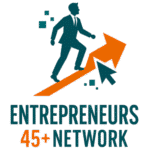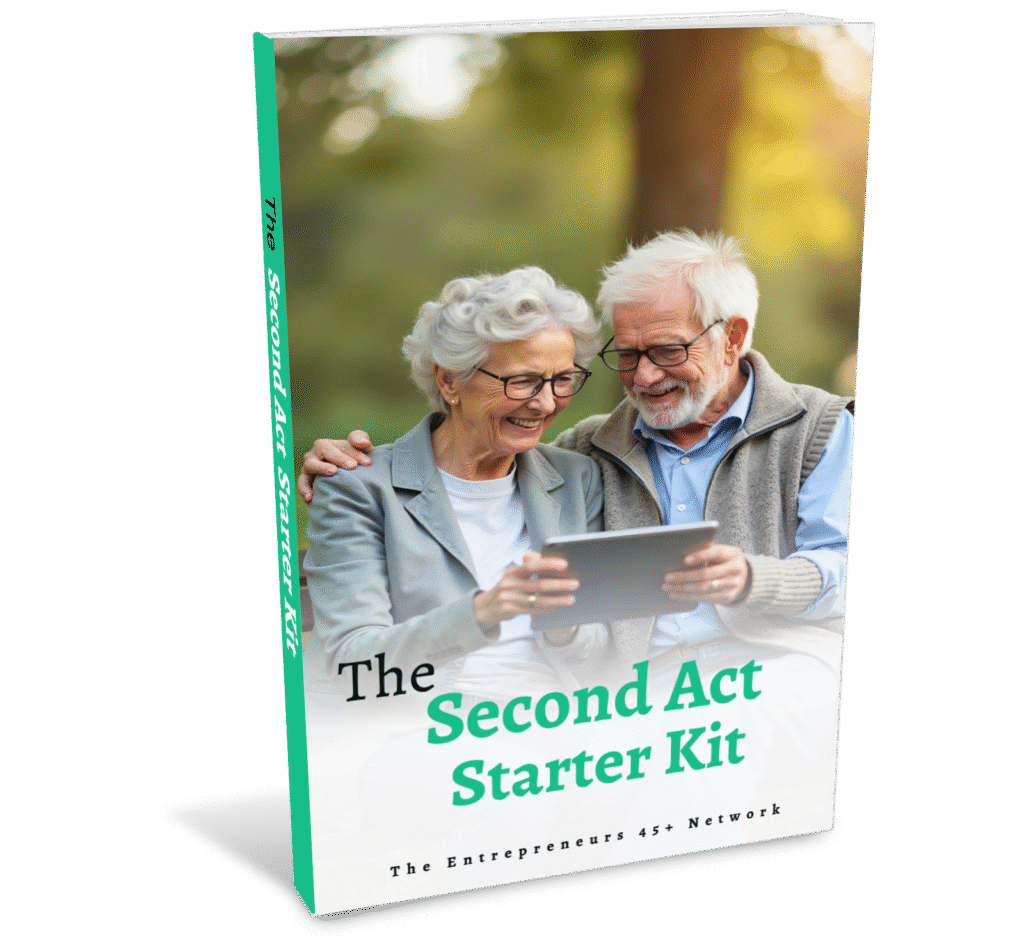This midlife transition from employee to entrepreneur requires a complete reimagining of your financial strategy. As you step away from the predictable world of corporate benefits, you’ll need to create a robust financial safety net that goes well beyond traditional retirement accounts. Your journey demands a more sophisticated approach to wealth building, considering factors like irregular income streams, self-funded healthcare, and business reinvestment needs. Understanding how to balance personal financial security with business growth becomes imperative, especially when you’re managing variable income patterns typical in entrepreneurship. The good news? You’re in your prime earning years, with experience and networks that can accelerate your success.
Key Takeaways:
- Diversifying retirement strategies beyond traditional 401k plans helps midlife entrepreneurs create multiple income streams through real estate investments, business equity, and passive income opportunities.
- Strategic tax planning and business structure optimization become vital elements for entrepreneurs in their 40s and 50s, as they balance personal wealth building with business growth objectives.
- Risk management through appropriate insurance coverage and emergency funds becomes more significant for midlife entrepreneurs, who need to protect both their business assets and personal financial security.
Reevaluating Retirement Paradigms
The Limitations of Solely Relying on 401(k)
Traditional 401(k) plans, while offering tax advantages and employer matching, can actually constrain your wealth-building potential as a midlife entrepreneur. The annual contribution limits ($22,500 for 2023, plus $7,500 catch-up if you’re over 50) might not align with your earning potential or wealth accumulation goals. Plus, the rigid withdrawal rules and penalties before age 59½ can limit your ability to access capital when you need it most for business growth or unexpected opportunities.
The standard 401(k) structure also ties your financial future to market performance during specific time windows, which may not sync with your entrepreneurial journey. Consider that market downturns near your planned retirement could slash your nest egg by 30-40%, a risk that becomes more significant when you’re building a business in your 40s or 50s.
Broader Perspectives on Financial Security
Your entrepreneurial venture itself can serve as a powerful retirement vehicle. By building a sellable business, you’re creating an asset that could potentially deliver a higher return than traditional retirement accounts. Many successful entrepreneurs find that their businesses can generate both passive income streams and substantial exit values, often exceeding what they could accumulate through conventional retirement savings.
Diversification takes on new meaning when you’re a midlife entrepreneur. Beyond stocks and bonds, your financial security can encompass revenue-generating intellectual property, real estate investments that support your business, or strategic partnerships that create ongoing income streams. These alternative assets often provide better tax advantages and greater control over your financial destiny than traditional retirement vehicles.
Consider structuring your business to include multiple revenue streams – consulting services, digital products, or recurring subscription models. This approach creates a self-sustaining ecosystem that continues generating income well into your retirement years, while potentially providing opportunities to scale back involvement gradually rather than facing a hard retirement date.
Diversification Strategies for Midlife Entrepreneurs
Exploring Alternative Investment Vehicles
Moving beyond traditional retirement accounts opens up compelling opportunities through alternative investment vehicles. Real estate investment trusts (REITs) offer you exposure to commercial and residential property markets with lower capital requirements than direct property ownership. Peer-to-peer lending platforms enable you to act as a bank, potentially earning 6-12% returns while spreading risk across multiple loans. Additionally, equity crowdfunding lets you invest in promising startups with as little as $1,000, though these investments carry higher risk alongside their growth potential.
Consider allocating 15-30% of your portfolio to alternative assets like precious metals, cryptocurrency, or collectibles. Gold and silver can serve as inflation hedges, while a small position in select cryptocurrencies (1-5% of total holdings) provides exposure to digital asset appreciation. The key is selecting alternatives that align with your risk tolerance and expertise – if you understand art or vintage cars, these could become valuable portfolio additions.
Building a Balanced Portfolio Beyond Traditional Assets
Your midlife investment strategy should incorporate both defensive and growth positions across multiple sectors. Consider allocating 40% to dividend-paying stocks in recession-resistant industries like healthcare and consumer staples, 30% to bonds and fixed-income securities, and 30% to alternative investments that can generate passive income streams. This balanced approach helps protect your wealth while creating multiple revenue channels.
Geographic diversification adds another layer of protection – look beyond domestic markets to international and emerging market opportunities. You might explore global ETFs or ADRs (American Depositary Receipts) of established foreign companies, aiming for a 20-30% international exposure in your equity allocation. This global approach helps shield your portfolio from regional economic downturns.
Advanced portfolio balancing techniques like factor investing can further optimize your returns. By targeting specific investment characteristics such as value, momentum, and quality, you can fine-tune your portfolio’s performance. Regular rebalancing – typically quarterly – ensures your asset allocation stays aligned with your risk tolerance and business goals while capitalizing on market movements.

The Tax Advantage Playbook
Midlife entrepreneurs face unique tax circumstances that require a sophisticated approach to wealth preservation. Financial Planning for Entrepreneurs (2025 Guide) reveals that business owners who implement strategic tax planning can save up to 40% more on their annual tax obligations compared to those who rely solely on basic deductions.
Tax-Deferred Growth Opportunities
Beyond traditional 401(k)s, you can leverage Simplified Employee Pension (SEP) IRAs that allow contributions of up to $66,000 for 2023. These vehicles provide immediate tax deductions while allowing your investments to grow tax-deferred until withdrawal. For higher-income entrepreneurs, combining a Cash Balance Pension Plan with a 401(k) could enable you to contribute over $300,000 annually in tax-advantaged retirement savings.
Self-employed entrepreneurs should explore Solo 401(k)s, which offer both employee and employer contribution capabilities. This dual contribution feature enables you to maximize tax-deferred savings while maintaining complete control over investment choices. Additionally, these plans often include Roth options, providing tax diversity in retirement planning.
Strategic Tax Planning for Business Owners
Your business structure significantly impacts tax obligations. Switching from a sole proprietorship to an S-corporation could reduce your self-employment tax exposure by up to 15.3% on qualifying income. Through careful planning of salary versus distribution ratios, you can optimize your tax position while maintaining compliance with IRS guidelines.
Timing your business expenses and income can substantially reduce your tax burden. By accelerating deductions and deferring income near year-end, you can strategically manage your tax bracket. Consider establishing a defined benefit plan, which could allow annual tax-deductible contributions exceeding $200,000 while building substantial retirement savings.
Advanced tax strategies like cost segregation studies for business property or establishing charitable remainder trusts can provide significant tax advantages. These approaches require careful coordination with your tax professional but can yield substantial long-term benefits. Your business equipment purchases, properly timed and structured, can provide immediate write-offs through Section 179 expensing or bonus depreciation, potentially reducing your taxable income by up to $1,050,000 in 2023.

Personal Financial Management Tools and Techniques
Budgeting for Business and Personal Expenses
Separating your business and personal finances creates clarity and protects your personal assets. Start by establishing distinct bank accounts and credit cards for business versus personal use. Map out fixed costs like mortgage/rent, insurance, and utilities alongside variable expenses such as marketing, inventory, and business development. This separation allows you to accurately track business profitability while maintaining personal financial stability.
Consider adopting the 50/30/20 budgeting principle for your personal finances – allocating 50% to necessities, 30% to discretionary spending, and 20% toward savings and investments. For business expenses, implement quarterly budget reviews to adjust spending based on revenue patterns and growth objectives. This dual-tracking system helps prevent business cash flow issues from impacting your personal financial security.
Leveraging Technology for Financial Tracking
Modern financial management platforms like Quickbooks, Mint, and Personal Capital offer robust features for tracking both business and personal finances. These tools provide real-time insights into cash flow, expense patterns, and investment performance. By connecting your accounts to these platforms, you’ll gain automated expense categorization, customizable reports, and predictive analytics to guide your financial decisions.
Cloud-based accounting software enables seamless collaboration with financial advisors and tax professionals while maintaining secure records. Many platforms now integrate with payment processors, banks, and investment accounts, giving you a comprehensive financial dashboard. Mobile apps allow you to capture receipts, track mileage, and monitor investments on the go, streamlining your financial management process.
Advanced features like AI-powered spending analysis and automated bill payments help you identify cost-saving opportunities and maintain consistent cash flow. Consider using specialized tools like Expensify for business expense tracking or Harvest for time and billing management to further optimize your financial operations. These integrated solutions reduce manual data entry and provide more accurate financial forecasting capabilities.
Crafting a Sustainable Financial Vision
Setting Long-Term Goals Aligned with Entrepreneurial Aspirations
Your entrepreneurial journey demands a financial roadmap that extends beyond traditional retirement planning. Map out specific milestones for both your business growth and personal wealth accumulation, aiming for targets that complement rather than compete with each other. For example, if you’re planning to scale your business in the next five years, allocate resources between operational expansion and personal investments in a way that maintains steady cash flow while building equity.
Consider structuring your goals in three-year intervals, with clear metrics for both business valuation and personal net worth. This approach allows you to adjust your strategy based on market conditions while maintaining focus on long-term wealth creation. Many successful midlife entrepreneurs aim to build their businesses to a point where they can either sell for a substantial profit or create passive income streams that supplement their retirement funds.
Building an Emergency Fund for Business Resilience
Your emergency fund strategy needs to encompass both personal and business contingencies. While traditional advice suggests keeping 3-6 months of expenses saved, entrepreneurs should aim for 6-12 months of combined business and personal expenses. This expanded safety net provides protection against market downturns, seasonal fluctuations, and unexpected business challenges.
Consider maintaining separate emergency funds for business and personal use, with the business fund housed in a high-yield business savings account. Your business emergency fund should cover imperative operational costs like payroll, rent, and critical supplies, while your personal fund safeguards your household expenses.
Structure your emergency funds using a tiered approach: keep 30% in easily accessible accounts, 40% in short-term certificates of deposit, and the remaining 30% in liquid investments that can earn higher yields while maintaining relatively quick access. This strategy helps your safety net keep pace with inflation while providing multiple layers of financial protection for both your business and personal life.
To wrap up
On the whole, your journey as a midlife entrepreneur requires a more sophisticated and diversified approach to financial planning than simply relying on a 401k. By implementing a multi-faceted strategy that includes self-directed IRAs, real estate investments, business succession planning, and strategic tax optimization, you can build a robust financial foundation that supports both your entrepreneurial ventures and retirement goals. Your unique position as a seasoned professional gives you advantages in terms of experience and network connections, which can be leveraged to create multiple income streams.
As you navigate this exciting transition, consider working with financial advisors who specialize in entrepreneurial wealth management to help you make informed decisions about asset allocation and risk management. Your financial success depends on striking the right balance between investing in your business’s growth and securing your long-term financial future. By taking control of your financial destiny now, you’re positioning yourself for both business success and a comfortable retirement on your own terms.



